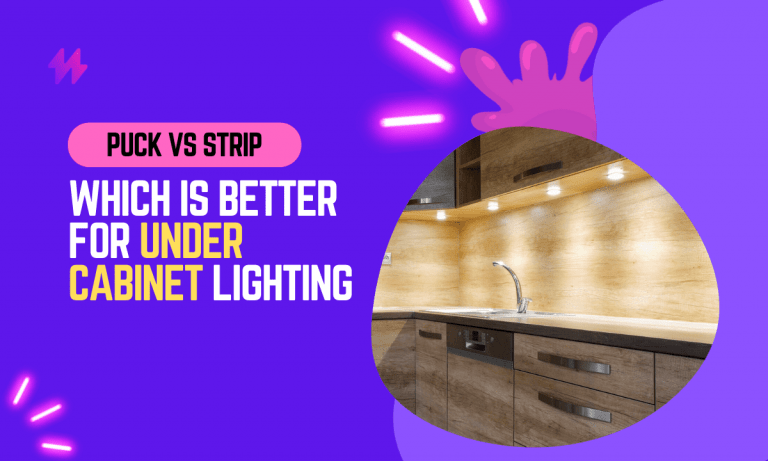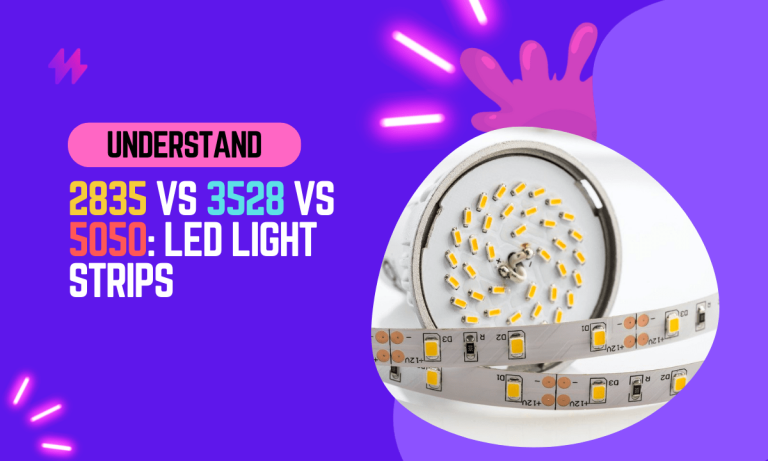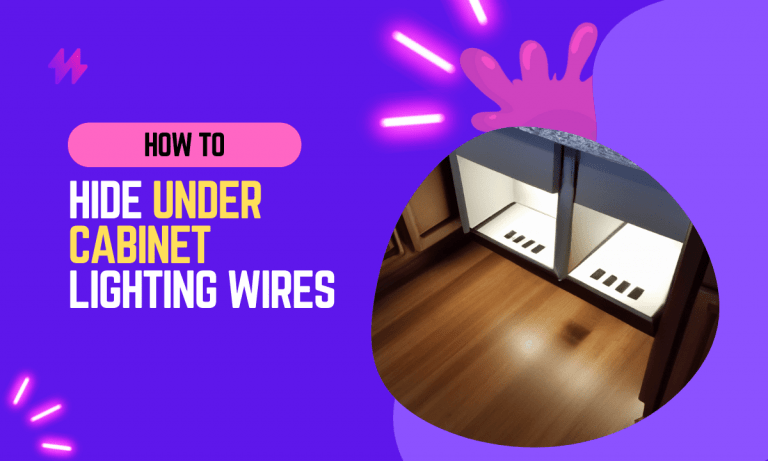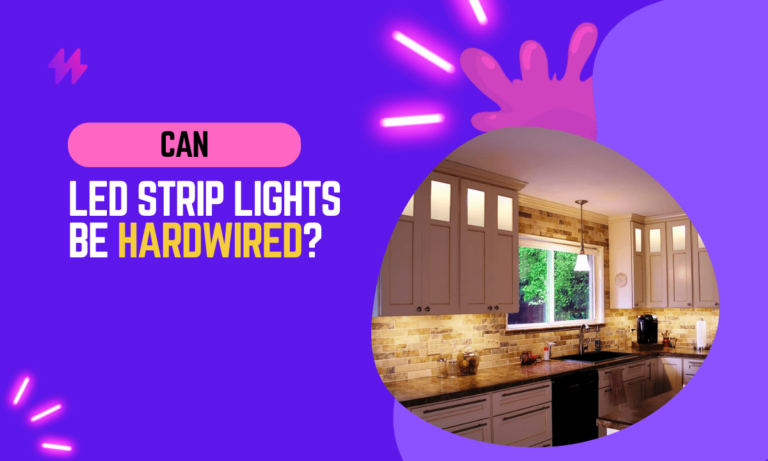How to Choose LED Diffusers for Light Strips

LED lights are a popular choice for lighting these days. LED light strips, in particular, can be used to create a variety of different effects, depending on the type and color of the LED light strip used. One crucial accessory for LED light strips is an LED diffuser. LED diffuser helps to spread the light evenly across the surface it is covering and prevents shadows from being cast.
This article will discuss what an LED diffuser is, why you need it, and how to install it.
LED diffusers are essential components that not only enhance the aesthetic appeal of LED strip lights but also improve the overall lighting quality. When it comes to installation, understanding how to choose LED diffusers for light strips can significantly impact the illumination and visibility in your space, ensuring you achieve the perfect lighting fixture for your needs.
Understanding LED Diffusers: How to Choose LED Diffusers for Light Strips & Their Functions
LED diffusers are coverings for LED light strips that help to spread the light evenly across a surface, preventing shadows from being cast. They are made out of materials such as acrylic or polycarbonate, and they come in a variety of shapes and sizes to suit different applications.
LED diffusers are important for LED light strips because they help to create an even light distribution. Without LED diffusers, the lights would create harsh shadows and uneven light distribution. This can be especially problematic when using LED light strips as a source of general lighting.
LED diffusers serve as crucial elements in achieving uniform illumination from LED light sources. By employing the right types of LED light diffusers, you can enhance the overall lighting effects and ensure that the desired brightness is maintained without the pitfalls of harsh shadows or uneven light distribution. Properly chosen LED strip diffusers will significantly impact the aesthetics and functionality of any lighting fixture, making them an essential consideration for both residential and commercial lighting projects.
Exploring Different Types of LED Diffusers: LED Strip Light, LED Strip Diffuser, and LED Profile Diffuser
There are three main types of LED diffusers: panel, dome, and lens.
Selecting the appropriate type of LED diffusers, such as flat diffusers or lens diffusers, ensures that your lighting solutions provide the desired level of brightness and a soft diffuse light effect. By utilizing various diffuser types and their optical properties, you can achieve ideal illumination for your spaces, transforming any LED fixture into an efficient and aesthetically pleasing lighting solution.
- Panel LED Diffusers: Panel LED diffusers are flat and rectangular and are best suited for large areas and LED Light strips.
- Dome LED Diffusers: Dome LED diffusers are round and resemble a dome, making them ideal for small areas.
- Lens LED Diffusers: Lens LED diffusers are shaped like a cone and are perfect for directional lighting.
LED Diffuser Dimensions: Understanding Lengths and Widths
There are a variety of light strip diffuser lengths to choose from, with most being 72 inches long. However, you can also get them in 96-inch or even shorter sizes if needed! They’re designed for use with aluminum channels and cover plates but they come as standard length options too so there’s no need to make your own fixture.
Opting for the right type of diffuser can greatly enhance your lighting installation, so understanding the benefits of different profiles like flat or v-shaped diffusers is vital for achieving proper illumination. Additionally, using a high-quality optical lens design in your choice of LED strip lighting can significantly impact the uniformity of light transmission, creating that coveted diffused look perfect for any light fixture.
Installing LED Diffusers for Light Strips: A Comprehensive Guide
Panel LED diffusers can be installed in two ways one by using screws or the other by using double-sided adhesive tape. Below see the whole process to install it.
To install panel LED diffusers effectively, you should consider the type of mounting that best suits your lighting fixtures, whether that be screws or double-sided adhesive tape. The choice of proper diffuser not only ensures consistent light distribution but also enhances the aesthetic appeal of your illuminated LEDs, making your space more visually appealing.
- LED diffusers can be easily installed using the adhesive on the back of the diffuser.
- Make sure that the surface where you will be installing the LED diffuser is clean and dry.
- Peel off the adhesive backing and place the LED diffuser in the desired location.
- Apply pressure to the LED diffuser to ensure that it sticks to the surface.
- LED diffusers can be removed by using a soapy water solution and a cloth.
Using LED Diffusers for Light Strips: Helpful Tips
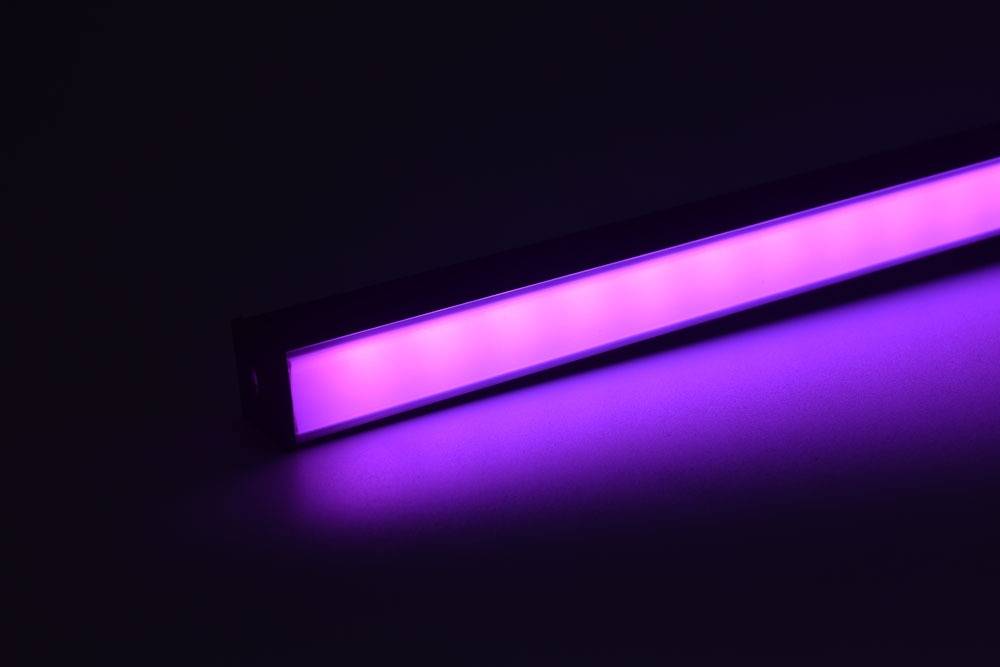
- When choosing an LED diffuser, make sure to select one that is the same size or larger than your LED light strip. This will ensure that there is enough coverage and that the light strip is not visible from behind the LED diffuser.
- If possible, try to avoid installing LED diffusers near heat sources, such as fireplaces or radiators, as this can cause the plastic to warp over time.
- To avoid creating hot spots in your LED light strips, be sure to evenly space out LED diffusers when installing. This will ensure that all areas of the LED light strip are receiving the same amount of lighting.
- By choosing LED diffusers that match the color and tone of your LED light strips, you can create a beautifully illuminated area that is perfect for any setting.
Whether you are using LED light strips for your kitchen, living room, or bathroom, LED diffusers can add a touch of style and sophistication that is sure to enhance the overall look of any space. So why wait? Start shopping for LED diffusers today and enjoy the benefits of LED lighting!
LED diffusers play a vital role in transforming the quality and appearance of lighting systems across various applications. Whether you’re looking to create soft, diffused illumination in accent lighting setups or seeking the right clear diffuser for maximum light output, understanding the variety of options available can greatly enhance your lighting installation experience.
Final Thoughts on LED Diffusers for Light Strips: Key Insights and Installation Tips
In conclusion, selecting the right LED diffusers for light strips is a crucial step in achieving both the aesthetic and functional goals of your lighting project. Diffusers play a key role in softening the intensity of LEDs, preventing glare, and distributing light evenly, which enhances the overall quality of light in any given space. When choosing LED diffusers, material quality and the type of diffusion should be primary considerations. Materials like polycarbonate or acrylic offer durability and excellent light diffusion properties, ensuring that the light emitted is not only uniform but also pleasing to the eye. The specific type of diffuser, whether it be frosted, opal, or clear, will depend on the desired lighting effect. Frosted diffusers, for example, provide a softer light, ideal for creating ambient lighting in living spaces or work areas where stark or direct lighting can cause discomfort.
Additionally, the design and compatibility of the diffuser with your LED strips must be considered to ensure a seamless installation. It’s important to choose diffusers that are easy to install and align perfectly with the dimensions and output of your LED strips. Many modern diffusers also come with features that allow for easy clipping onto the LED strip, simplifying the installation process. Assessing the environment where the LED strips will be used can also guide the choice of diffuser; for instance, in areas prone to moisture or dust, choosing a diffuser with protective properties is beneficial. Ultimately, well-chosen LED diffusers not only maximize the lifespan of your LED strips by protecting them from physical and environmental factors but also elevate the visual quality of spaces by delivering beautifully diffused light that complements both the functional needs and aesthetic values of any project.
How To Choose LED Diffusers For Light Strips | The Importance of LED Diffusers in Lighting
Understanding how to choose LED diffusers for light strips plays a crucial role in optimizing lighting setups. Selecting the right diffuser not only affects light distribution but also contributes to the aesthetic appeal of light fixtures. Transparent diffusers help in achieving uniform light spreads and reducing harsh lighting effects by softening light wavelengths. Many diffusers, including opal diffusers and microprism diffusers, enhance transparency while maintaining good light output. The choice between curved and flat diffusers can influence the visual outcome, creating either a delicate lighting effect or a more uniform appearance. Each diffuser version, from plastic to glass, offers unique optical characteristics that impact overall brightness and color quality. Exploring common diffuser shapes and textures ensures that one can achieve the desired lighting look, whether for indoor spaces or commercial environments.
How to Choose LED Diffusers for Light Strips | Enhancing Light Distribution
Choosing the right LED diffuser for light strips significantly enhances light distribution. Options like glass diffusers and plastic diffusers come in various designs, including flat and curved profiles. These profile diffusers/covers allow for a diffuse look that softens the harsh lighting of traditional LED spot fixtures. Clear diffusers provide maximum light output, while white or milky diffusers create a softer, more diffused appearance. Understanding the different profile diffusers available can lead to more satisfactory lighting effects in any space, whether for ambiance or task lighting.
Translucent materials with varying pigmentation can also change the aesthetic quality of the light. Using diffuser lenses with low transmittance yields a more uniform brightness across surfaces, reducing sharp light dots and enhancing comfort. Common diffuser textures, like honeycomb pattern diffusers or milky profile diffusers, can manipulate the lighting output to create magical effects. Selecting the right diffuser channels or covers ensures that every light installation meets the desired lighting settings, making spaces feel inviting and well-lit.
Improving Aesthetic Appeal
LED diffusers play a critical role in enhancing the aesthetic appeal of any lighting setup. How to choose LED diffusers for light strips often involves considering the types of diffuser/cover available, such as curved diffusers, flat diffusers, and black diffusers. Each version has unique properties that can influence light uniformity and spread brightness across a space. For instance, a white diffuser ensures a clean appearance while a smoky grey diffuser can add depth. Utilizing optical diffusers effectively can transform sharp lighting into soft, indirect light, creating magical lighting effects in residential or commercial spaces.
Choosing the right colors and styles of diffusers elevates the overall look of light fixtures. Common diffusers can include silicone profile diffusers or sleek rigid diffusers that blend seamlessly with the decor. Selecting multi-color diffusers could provide a playful touch, making the lighting adaptable for different settings. The use of spotless diffusers contributes to an unobtrusive look, allowing the light fixture components to shine. Understanding how different profile diffusers/covers affect your lighting is essential for achieving desired brightness levels while maintaining a stylish appearance.
Factors to Consider When Choosing LED Diffusers
Choosing the right LED diffuser is crucial for maximizing the performance and aesthetics of your lighting installations. Understanding how to choose LED diffusers for light strips involves evaluating various factors such as material selection, reflectivity, and light transmittance. For example, a flat diffuser can produce soft, even light, ideal for settings like kitchen counter lighting or showcase lighting. The choice between clear/transparent or low transmittance options can significantly impact brightness reduction and light color, while diffuser colors like smoky grey and opal provide distinct lighting looks. Consider the type of LED profiles and diffusers available, such as honeycomb diffusers or curved spotless diffusers, which can enhance the overall design and functionality of commercial light fixtures. Collaborating with reputable diffuser manufacturers will ensure you find robust diffusers that meet your project requirements and complement your favorite diffusers for effective led strip installation.
Material Selection for Optimal Performance
The choice of material for LED diffusers significantly impacts their performance in various light settings. Selecting the right type of diffuser for your light strips can enhance the overall brightness and quality of the illumination. Opal profile diffusers are popular for their ability to soften harsh lights and distribute them evenly, while smoky grey diffusers can create a more subdued ambiance. Flat diffuser results often depend on the transparency and thickness of the material used, with low transmittance diffusers providing a softer glow. Understanding how to choose LED diffusers for light strips can help achieve optimal performance and improve lighting aesthetics.
Different materials also affect the durability and heat resistance of the diffuser. Siliceous diffusers are known for their resilience and can withstand higher temperatures, making them suitable for applications near radiators or other heat sources. For projects requiring channel diffusers or diffuser strips, using a black profile diffuser/cover can create striking contrasts in indoor lighting setups. Meanwhile, a spotless diffuser isn’t always necessary; sometimes, a tented diffuser can diffuse the light more effectively in a specific context. Exploring the various types, including profile diffusers and diffuser versions, can help you find the ideal solution for your lighting needs.
Selecting the Right Opacity Level
Choosing the right opacity level for LED diffusers significantly impacts light distribution and aesthetics. Different types exist, including transparent and gray diffusers. A transparent light diffuser often allows for maximum light output, making it suitable for projects requiring a brighter ambiance. Conversely, an opal profile diffuser or cover can soften harsh lighting while offering a more pleasing look. For those exploring a light diffuser project, knowing that a spotless diffuser doesn’t interfere with the quality of light is essential. Understanding each option helps optimize your LED profile diffuser selection for varying applications.
Opacity also affects how the diffuser sits within the overall design, influencing the diffuser visible while blending seamlessly with the setup. A side profile light using a diffuser tube will create a softer glow, enhancing comfort for occupants. Average brightness reduction is an important factor to consider; a gray diffuser may provide a balanced illumination that reduces glare without sacrificing too much brightness. For various LED extrusions, selecting the ideal diffuser version ensures that the lighting meets the desired aesthetic without compromising functionality. How to choose LED diffusers for light strips is a key consideration for achieving the best effect.
Popular LED Diffuser Designs
Understanding the variety of LED diffuser designs is crucial for optimal lighting performance. Surface-mount LED diffusers often use an opal profile diffuser or cover, allowing for a soft, even distribution of light that helps make any space feel brighter. For those seeking to maximize light output, the transparent types can effectively channel illumination without compromising aesthetics. On the other hand, recessed LED diffusers provide a sleek, integrated look, perfect for modern interiors. While selecting the right option, one must also consider the impact of ultraviolet light on materials used in lampshades and how the diffuser version can alter the light’s quality. Knowing how to choose LED diffusers for light strips will ensure that the selected design not only meets functional needs but also enhances the overall aesthetic.
SurfaceMount LED Diffusers
Surface-mount options provide versatility and ease of installation for your lighting setups. These fixtures can house diffuser light panels that enhance light brighter without excessive glare. The opal profile diffuser cover offers a smooth, clean appearance while allowing ample light diffusion. By understanding how to choose LED diffusers for light strips, you can select the appropriate types—such as transparent or frosted variants—that best fit your design needs.
The choice of materials and designs for surface-mount LED diffusers significantly impacts the overall effectiveness of your lighting. The right diffuser version doesn’t simply enhance aesthetics; it also maximizes light output. Styles like the LEDYI and LED channel designs provide various options tailored to different environments. Knowing how to choose LED diffusers for light strips ensures you achieve the ideal balance between functionality and visual appeal, leading to spaces that are both well-lit and visually inviting.
Recessed LED Diffusers
Recessed LED diffusers provide a sleek and modern finish to any lighting project. Utilizing an opal profile diffuser/cover can help to create a uniform light distribution while effectively hiding the light strip components. Understanding how to choose LED diffusers for light strips involves considering the various types available, including transparent options for those seeking maximum light output without sacrificing aesthetics.
These designs are ideal for both residential and commercial applications. They seamlessly blend into ceiling spaces, offering an unobtrusive lighting solution. To maximize the benefits of recessed diffusers, it’s essential to evaluate the installation depth and compatibility with the specific light strips in use. Knowing how to choose LED diffusers for light strips ensures optimal performance and enhances overall design.
Best Practices for Using LED Diffusers
Positioning LED diffusers correctly is vital for achieving the desired lighting effects. To optimize performance, understanding how to choose LED diffusers for light strips is essential. Different types, such as transparent diffusers, enable maximum light output while minimizing harsh shadows. Consider placement height and angle to ensure uniform light distribution across the intended area. Regular maintenance and cleaning will also enhance longevity, helping to maintain the intended aesthetics and functionality of the lighting setup. Proper attention to these details ensures that the chosen diffusers perform effectively, delivering both visual appeal and practicality.
Positioning for Maximum Effectiveness
Proper placement of LED diffusers is crucial for achieving the best light distribution. Consider how to choose LED diffusers for light strips based on their types, such as transparent options that maximize light output. Positioning diffusers close to the light source enhances overall brightness while ensuring that the emitted light is softer and more evenly distributed across the space.
Taking into account the layout of the area where the light strips are installed can significantly influence the effectiveness of the diffusers. For example, placing the diffusers at an angle can help reduce glare and create a more uniform illumination pattern. Understanding how to choose LED diffusers for light strips allows for a thoughtful approach to maximizing both functionality and the aesthetic quality of your lighting setup.
Maintenance Tips for Longevity
Proper maintenance of LED diffusers significantly extends their lifespan. Regular cleaning prevents the buildup of dust and grime that can diminish their performance. For those selecting types of transparent diffusers, ensure that you use a soft, lint-free cloth and appropriate cleaning solutions that won’t harm the material. This practice helps to maintain maximum light output, which is crucial for effective light distribution.
It is also essential to avoid exposing LED diffusers to excessive heat or direct sunlight. Such conditions can warp or discolor the diffuser over time. Understanding how to choose LED diffusers for light strips involves selecting materials known for their durability and resilience. Regular inspections for cracks or damage will help you address issues before they become significant problems, ensuring prolonged functionality and aesthetic appeal.

